Georgians, Ingush and Ossetians – and no problems
Georgians, Ingush and Ossetians in North Ossetia
Three ethnic groups- Georgians, Ingush and Ossetians, are residing in Balta village, North Ossetia. Their children attend the same school and kindergarten, while adults work side-by-side and help each other, as is customary in the villages.
This combination: Georgians, Ingush and Ossetians, usually rings the bell of ethnic and territorial conflicts: Georgian-Ossetian conflict in the 90s and in August 2008; and Ossetian-Ingush conflict over the East Prigorodny district, also in the 90s.
Nevertheless, there have never been any ethnic conflicts in this village. The neighborhood quarrels certainly happen from time to time, but they never emerge on ethnic grounds. And the villagers unanimously claim that even in the 90s, when the whole Caucasus was on fire, not a single shot was made there.
How do they manage it? That’s what this story is about.
The Darial Gateway
Balta village is situated on the Georgian Military Highway, right at the entrance to the Darial Gorge, on the border of South Ossetia, Ingushetia and Georgia. There is the Terek river flowing on one side and the villagers’ houses that go up the mountain on another side.
Territorially it is located in North Ossetia, at an 8-km distance from Vladikavkaz. However, once you cross the gorge eastward, in a few kilometers you will find yourself in Jeyrakh district, Ingushetia. Whereas if you move southwards along the Georgian Military Highway, it will take you some 15 minutes to get to the Georgian border.
A grocery shop in the lower part of the village is located right on the highway. Sabina Plieva, a smiley shop assistant, invites us to the storeroom, where Dariko Tinikashvili, her mother-in-law and a shop owner, is busy redoing her manicure.
The women are talking over each other about the communications problems, the lack of sidewalks and other hardships.
“We are in no way concerned about the ethnicity problem. What we are actually concerned about are the water supply, transport and electricity problems. My daughter-in-law is Plieva, an Ossetian, whereas I am Georgia. So what”? says Dariko.
According to the 2010 All Russian Census data, there are about 1,000 residents in Balta village. More than half of them are Georgians, who are mostly residing in the upper part of the village. The Ingush make about a quarter of the total number of villagers, whereas the Ossetians – about 15%.
Mixed Blood
Once you start talking to Dato Kudziev and hear his accent, you’ll immediately think that he is an Ingush.
“My mother is Georgian and my father is Ossetia. I have many Ingush friends. Sometimes I talk to my Ossetian neighbors in Ossetian and they respond in Georgian, and vice versa. There was some minor tension following the August war 2008. The government officials came here and held a meeting with the villagers. But no one here was going to enter into conflict anyway. We all live here in peace and harmony.”

This young man is among those few, who are engaged in agricultural activity on the ground. The village youth mostly travel to work in Vladikavkaz.
The population of Balta village was mostly formed in Soviet times, in 1960-1970. Many people then left the Leningori district of South Ossetia Autonomous Region of Georgia and settled down in Balta. They were employed at the local collective farm. So, their children, grandchildren and great-grandchildren have stayed here.
The elderly said: ‘We will live the way we used to live’
Grandma Eteri also moved to Balta from Leningori district and has been living here all her life. The neighbors often gather under her house canopy, they lay a table, they bring whatever they can and are pleased to treat the bypassers with home-made cheese and tomatoes.
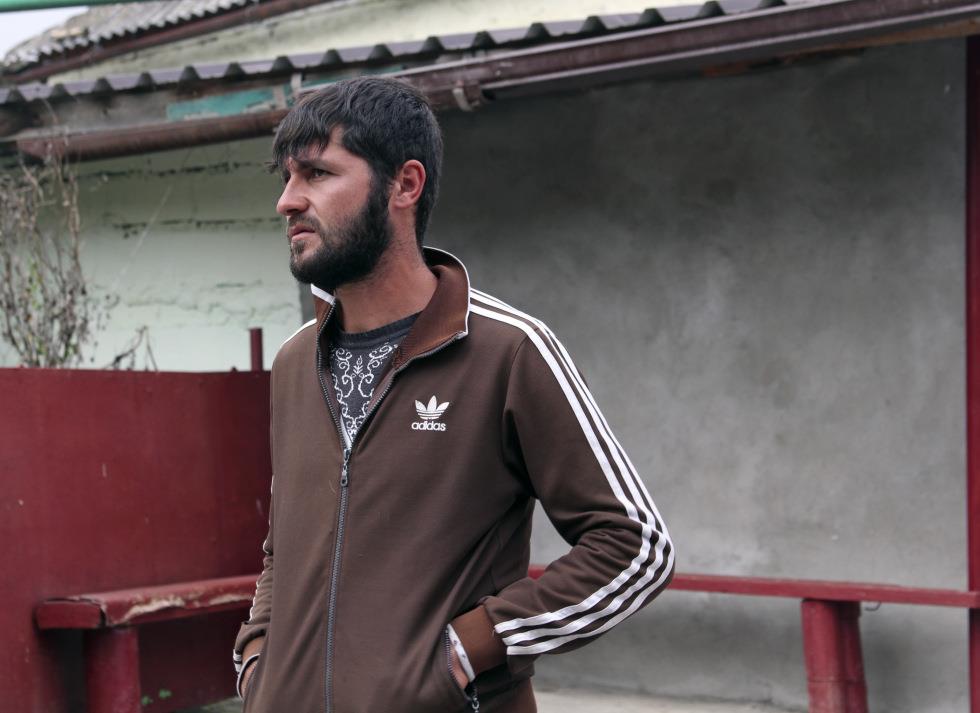
Eteri, who is mixing Russian and Georgian while talking, says: “There are many mixed families here. We help each other. Armenians and Russians also live here alongside Georgians, Ossetians and Ingush. What confrontation are you talking about? We have nothing to divide. Only the Ingush people suddenly left the village in 1992, they were still scared. However, later, everyone returned back to their homes.
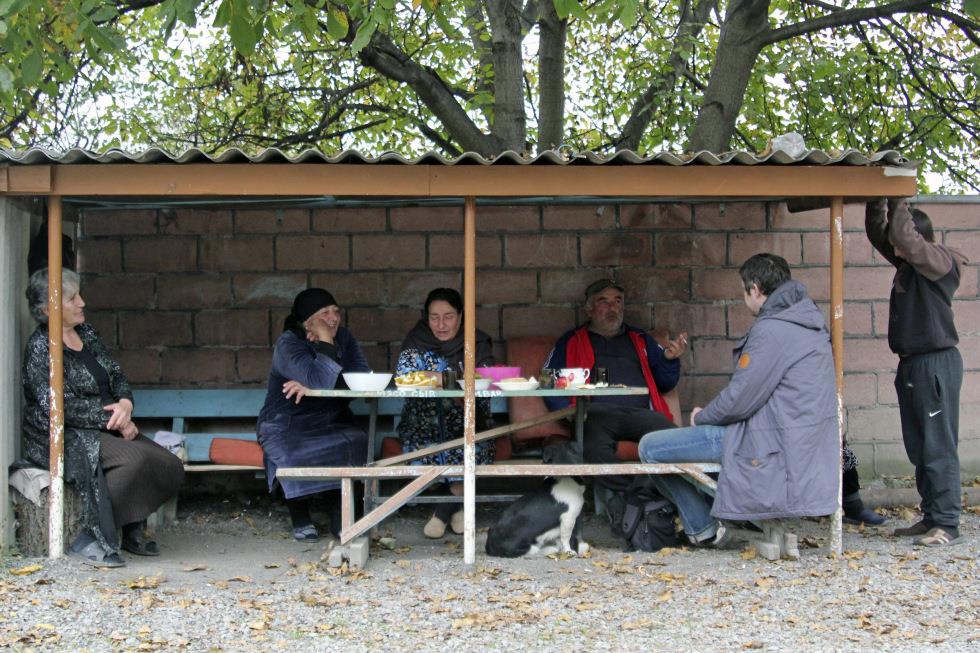
Another neighbor, Murat Ramonov, drives up in his oldtimer ‘Uazik’ (UAZ –vehicle, produced by Ulyanovsk-based automobile manufacturer). While his 12-year-old son is parking the car, Murat lights a cigarette and listens in on the conversation.

“There have never been any conflicts, that’s for sure. Even in the 90s, during the developments around the Ingush, we didn’t have any conflicts here. And that’s because their elderly men came here and told our elderly: ‘We will live the way we used to live.’
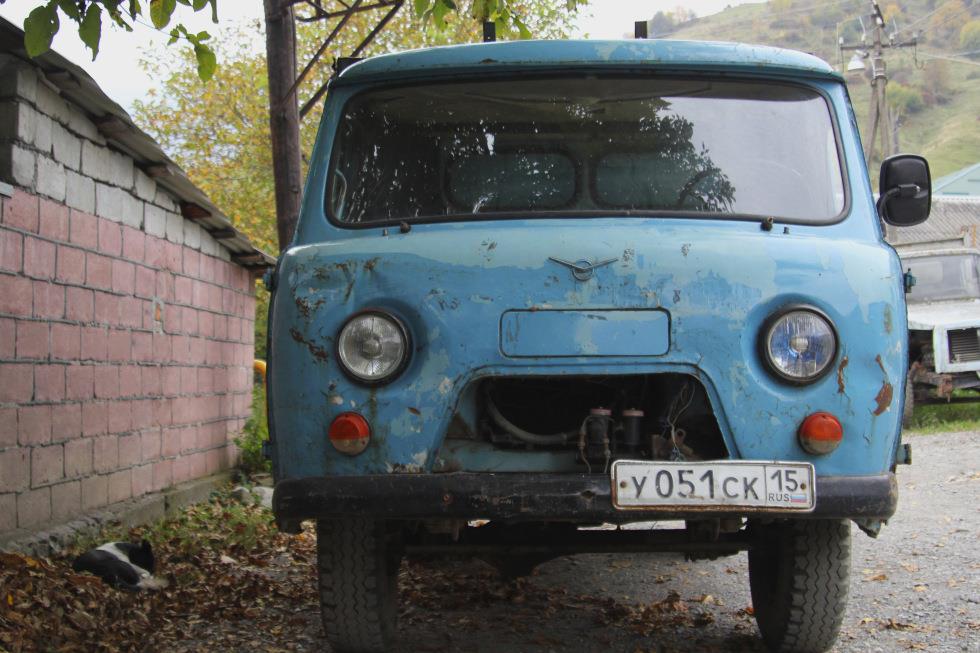
One of the neighbors in a black handkerchief got up from the table, apologized and went home. Eteri said in a whisper: “Her two sons were killed in a road accident less than a year ago. They were such good guys, but what the young people are supposed to do here? There’s nothing they can busy themselves with, so they often get into troubles.”
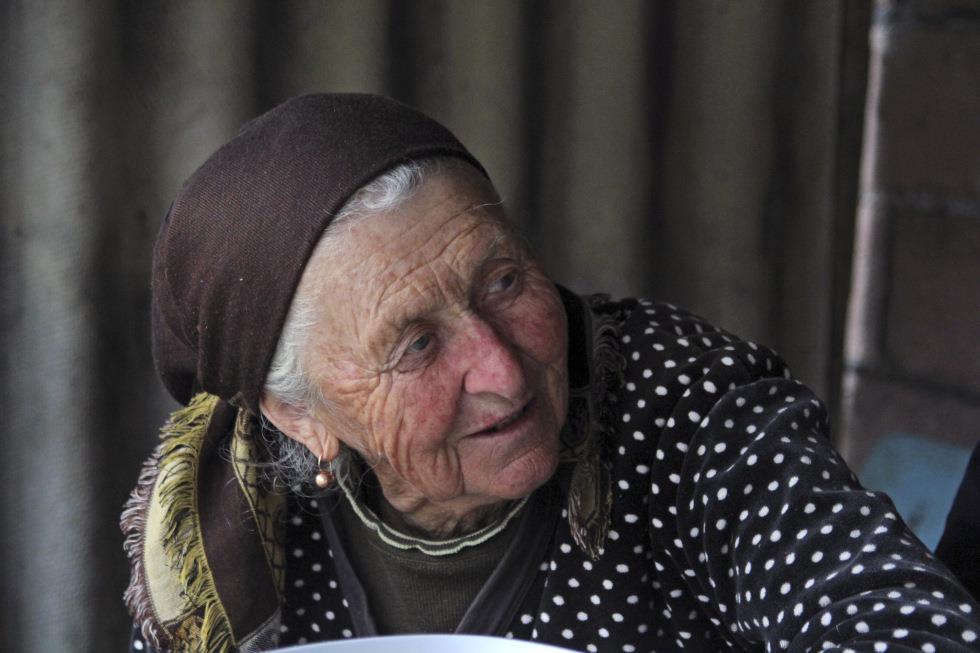
Cherries or a man named Bolta
Geographical names often become an occasion for virtual and real wars in other parts of the Caucasus. However, in this village the name ‘Balta’ doesn’t generate a discord among its residents and it is pronounced the same way in all languages.
Though, there are different opinions with regard to etymology of this word.
“According to the Caucasus Toponymic Dictionary, the word ‘Balta’ takes its root from the Ossetian word ‘bal’-cherry, whereas the ending ‘ta’ is an indicative of plural form, i.e., the word ‘Balta’ means ‘cherries’,” the neighbors are discussing the issue at a tea-party.
Meanwhile, Magomed Tsitskiev, the local Ingush, has a different version. He claims that this name originated from the name of the village founder, his remote relative, Bolta Tsitskiev.
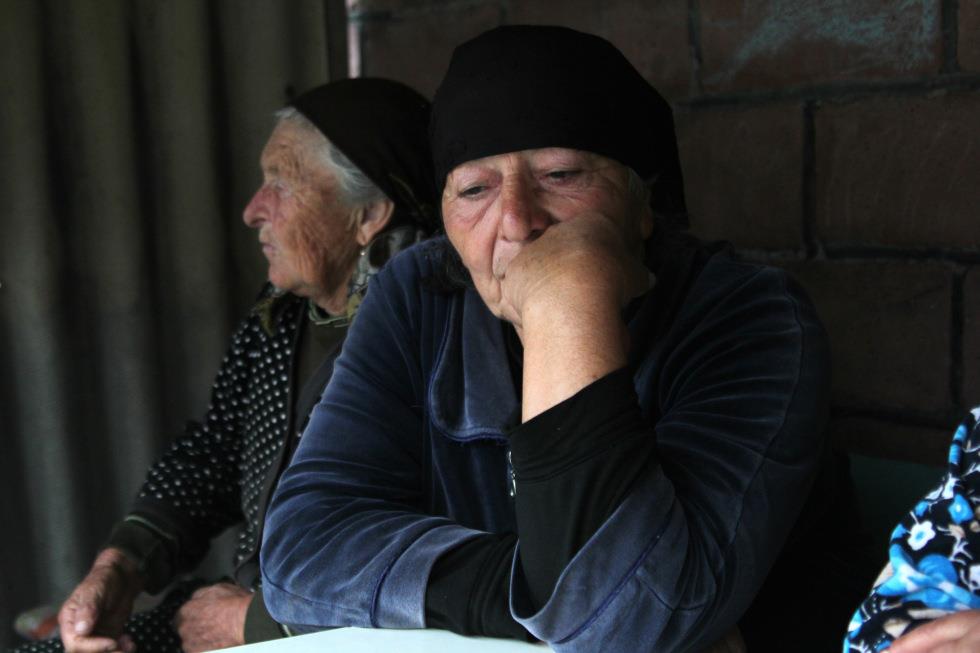
“This is my house,” says Magomed, pointing to his mansion. “And that one belongs to my Ossetian neighbor,” he says, pointing to a nice house on the opposite side.
“We work together and live side-by-side in peace and harmony. The only difference is that we are buried in separate cemeteries, either in the Muslim or the Christian one.”

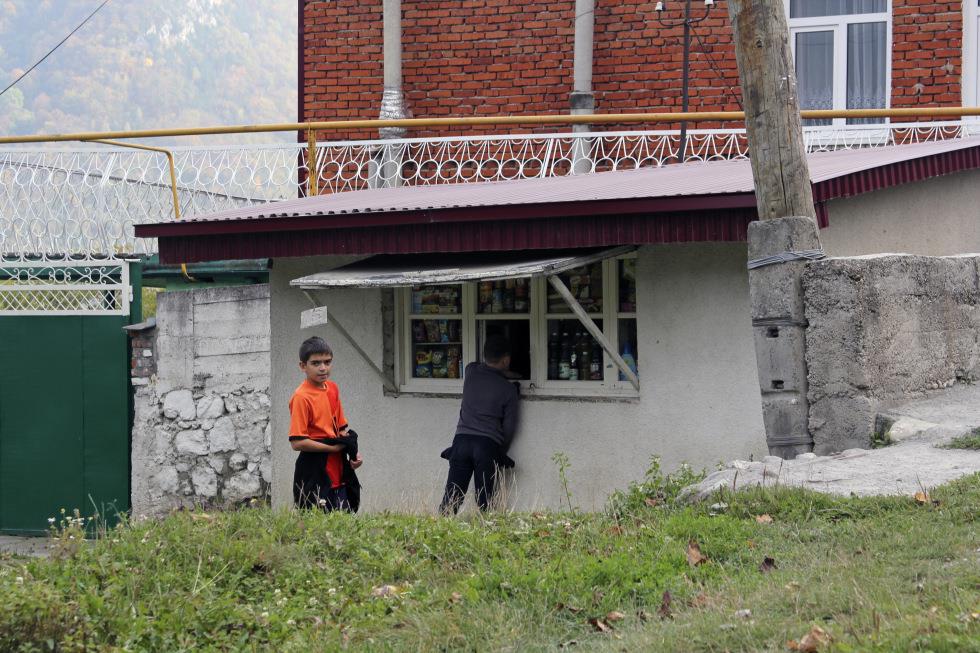
- The Ossetian-Ingush conflict was an ethno-political conflict in the eastern part of the Prigorodny district of North Ossetia (RF). It resulted in armed clashes on October 31-November 4, 1992, and numerous casualties on both sides.
- Georgian-Ossetian conflict was an ethno-political conflict that emerged in 1991-1992 between the Georgian central leadership and then-Autonomous Region of South Ossetia, which unilaterally proclaimed its independence and announced about setting up the Republic of South Ossetia.
- In August 2008, the Georgian-Ossetian live conflict grew into a five-day war, in which South Ossetia was supported by the Russian army. Following the war, Russia recognized the independence of South Ossetia, though the majority of world countries still regard this territory as an integral part of Georgia.
- North Ossetia’s ethnic composition underwent certain changes over the past 25 years. According to the latest soviet census data, there were over 12,000 Georgians in the republic; their number dropped by 3,000 in 2010. The Ingush population also reduced by 13,5% in the aforesaid period- the majority of the Ingush left North Ossetia due to the armed conflict in the Prigorodny district. Though, many of them returned to their homes in the subsequent years.


















